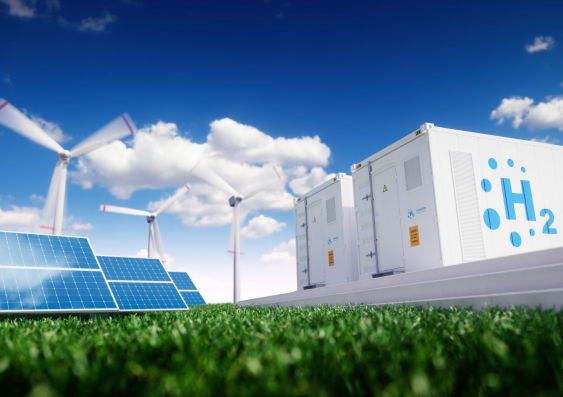UNSW delivers feasibility study on renewable energy technologies in NSW
The study lays out a comprehensive plan for establishing a thriving new renewables industry in NSW.
The study lays out a comprehensive plan for establishing a thriving new renewables industry in NSW.

Louise Templeton
Corporate Communications
+61 (0)413 495 994
louise.templeton@unsw.edu.au
A research consortium led by UNSW Sydney has delivered a report to the NSW government that establishes a roadmap to transforming the state into a global renewable energy superpower.
The Power-to-X (P2X) Industry Feasibility Study was announced by Penny Sharpe, NSW Minister for Climate Change, Minister for Energy, Minister for the Environment, and Minister for Heritage at the Asia-Pacific Hydrogen Summit 2023, opens in a new window in Sydney today.
The study was commissioned by the Office of the NSW Chief Scientist & Engineer (OCSE) as part of the NSW P2X Initiative, opens in a new window. It was led by UNSW’s Scientia Professor Rose Amal and her team at the Powerfuels including Hydrogen Network, opens in a new window (PFH2N), an innovation group under the NSW Government's $15 million Decarbonisation Innovation Hub, opens in a new window.
P2X refers to energy conversion technologies that can be used to store power surpluses from renewable energy sources as chemical energy. P2X technologies can be used to produce clean fuels and chemicals such as hydrogen, ammonia, methane and many other derivatives, and is far less capital intensive than alternatives such as battery storage.
Read more: UNSW Sydney leads group to power NSW infrastructure with renewables
NSW Chief Scientist & Engineer Professor Hugh Durrant-Whyte said the study is the cornerstone of the NSW Government’s goal of creating a global P2X innovation and industry hub.
“P2X technologies hold the key to creating new job opportunities and fostering the growth of clean, green industries. With our state's formidable research and development capabilities, we are well-positioned to be an international pioneer in P2X technologies,” Professor Durrant-Whyte said.
Prof. Amal emphasised the importance of collaboration between university research partners, industry, and government in delivering the work.
“This study serves as a vital knowledge-sharing platform, fostering teamwork among stakeholders and accelerating the advancement and implementation of P2X technology in NSW,” Professor Amal said.
“It outlines the state-of-play on current policies, provides an assessment of feedstocks and constraints, and gives an overview of near-, medium- and long-term opportunities in P2X.
“In addition to the NSW Power-to-X state-of-play road-mapping exercise, we’ve also delivered the NSW Powerfuel Value Chain Tool, opens in a new window, an online, open-source tool that provides access to all our research and modelling data. It's available for use by all stakeholders interested in exploring P2X opportunities in NSW.”
Dr. Rahman Daiyan, deputy lead of the PFH2N and lead developer of the online tool, said it’s a useful, practical resource that gives NSW industry and investors first-hand information on their P2X projects.
“We made the tool user-friendly for industry and investors. Everyone can do their own feasibility analysis to assess if their proposals are economically viable at various locations for different chemicals,” Dr. Rahman said.
The NSW P2X Industry Feasibility Study and NSW Powerfuel Value Chain Tool are an important step forward in the NSW Government's mission to transition to a net-zero economy, fostering economic growth while mitigating the impact of carbon emissions.
The study and tool can be viewed at the OCSE website, opens in a new window.